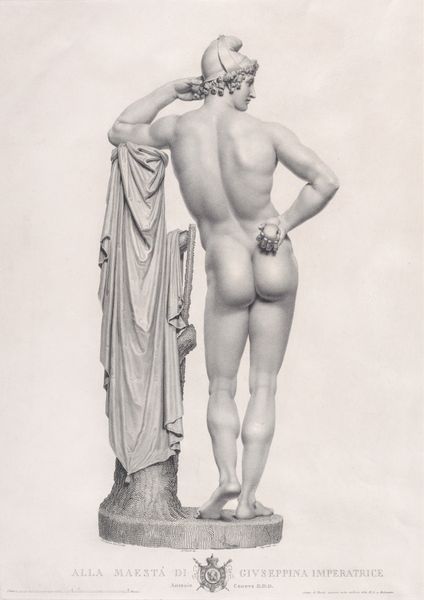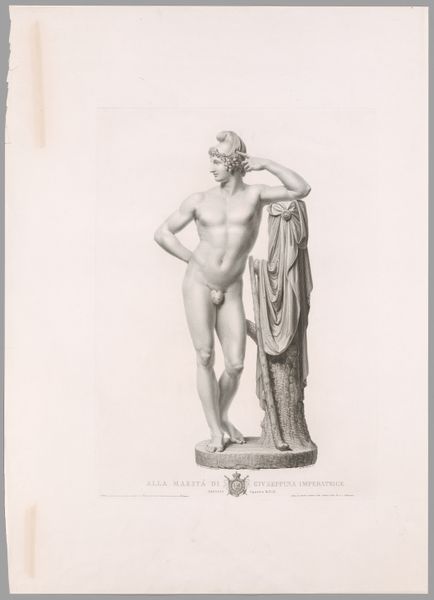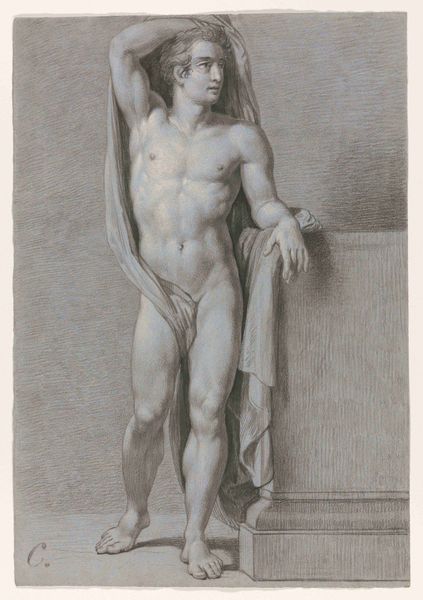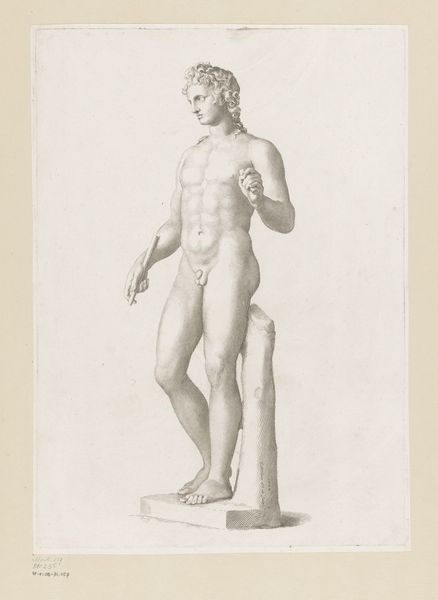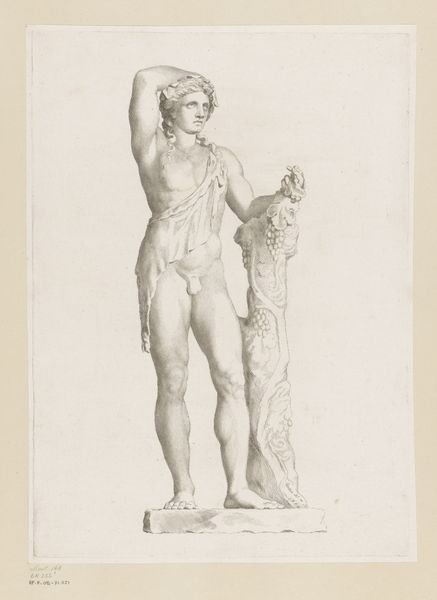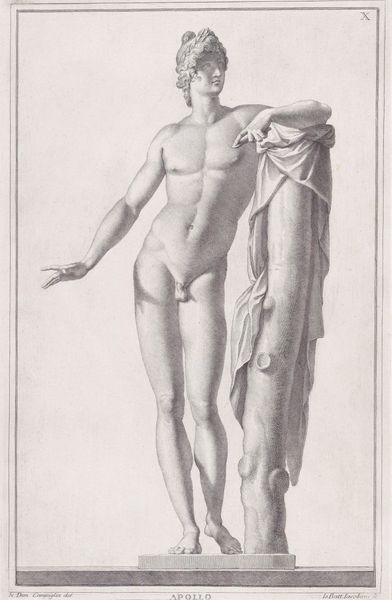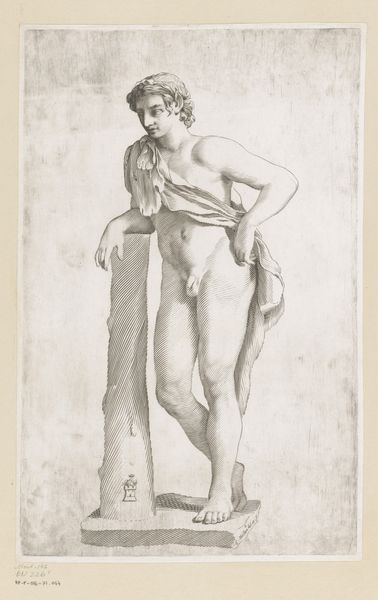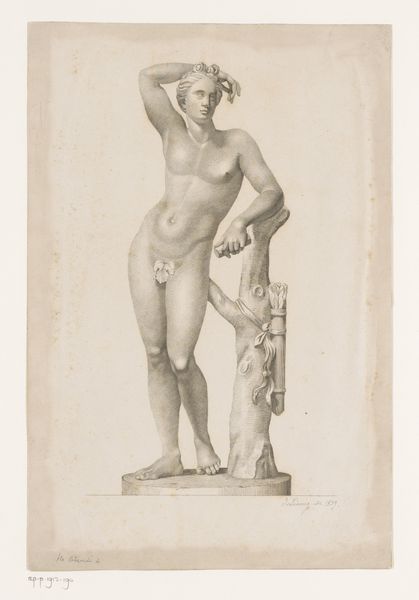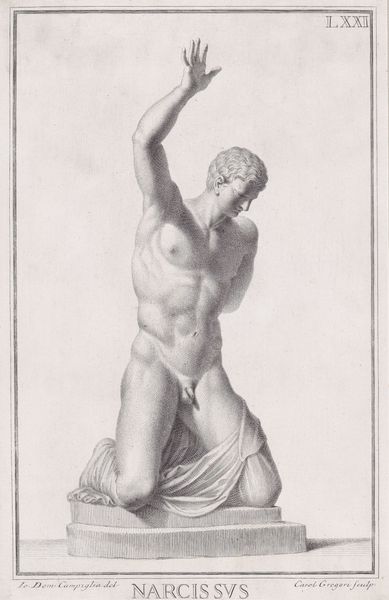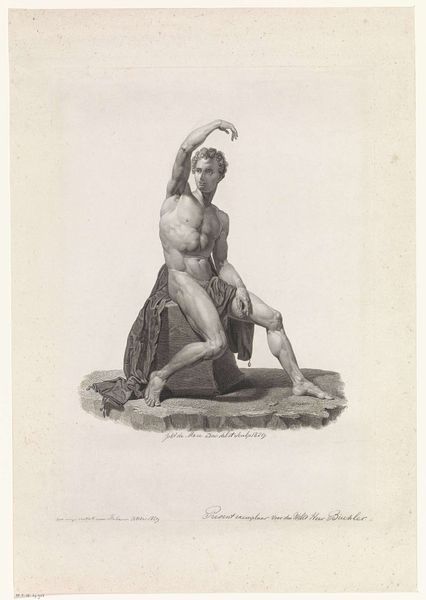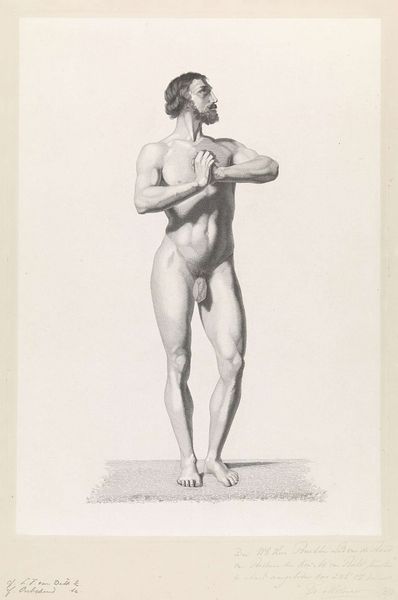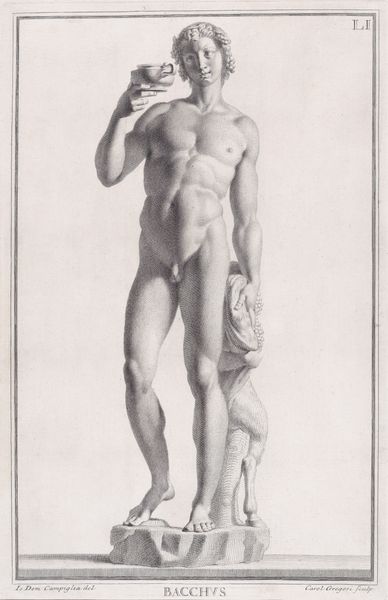
Paris leaning on tree stump, frontal view, from "Oeuvre de Canova: Recueil de Statues..." 1817
0:00
0:00
drawing, print, graphite, engraving
#
drawing
#
neoclacissism
# print
#
pencil sketch
#
classical-realism
#
charcoal drawing
#
figuration
#
form
#
pencil drawing
#
line
#
graphite
#
portrait drawing
#
history-painting
#
graphite
#
engraving
#
male-nude
Dimensions: Sheet: 25 3/8 × 19 1/8 in. (64.5 × 48.5 cm) Plate: 22 1/4 × 15 15/16 in. (56.5 × 40.5 cm)
Copyright: Public Domain
Curator: This is an engraving after a drawing by Giovanni Battista Balestra, created in 1817, depicting the statue of "Paris leaning on a tree stump." The statue itself, of course, is by Antonio Canova. It’s part of the "Oeuvre de Canova" collection, currently residing at the Metropolitan Museum of Art. Editor: It feels so cool, literally. The tonal range is really limited, all grays and whites, giving it a kind of detached, almost otherworldly feel. He looks rather nonchalant, even bored. Like, "Oh, another golden apple? Whatever." Curator: It's interesting how Canova, and consequently Balestra, engage with Neoclassical ideals. The body is idealized, yes, but there's a distinct interest in surface texture. Look at the draped cloth and tree trunk – those elements draw focus onto the engraver’s skill, their meticulous labour. This piece really exemplifies a broader production system where different skills and labor practices were required. Editor: Exactly! It’s not just the final form of the sculpture; it's this whole process of translating it, disseminating the ideal form through printmaking that’s intriguing. The translation from three dimensions to two adds another layer. The print medium gives Canova immortality. Curator: Absolutely, the materiality of the engraving – the paper, the ink, the very act of replication – shifts our understanding of authorship and value. It transforms sculpture into a commodity, ready for consumption and circulation, both literally and figuratively. The act of the engraver almost rivals that of the original sculptor, don’t you think? Editor: Perhaps! Thinking about the print as an object itself adds weight. We are dealing with representations layered upon representations, translations upon translations. But somehow, in all those moves between media and artists, something fundamental persists; the male gaze persists from antiquity through neoclassicism to now. Curator: In the end, looking closely at Balestra's print reveals the collaborative networks and artistic labor involved in shaping and disseminating classical ideals across Europe at the beginning of the 19th Century. Editor: And for me, the figure embodies that peculiar tension between eroticism and distance, desire and untouchability, that Neoclassical art often invokes. It still speaks, and even whispers a challenge across time.
Comments
No comments
Be the first to comment and join the conversation on the ultimate creative platform.
